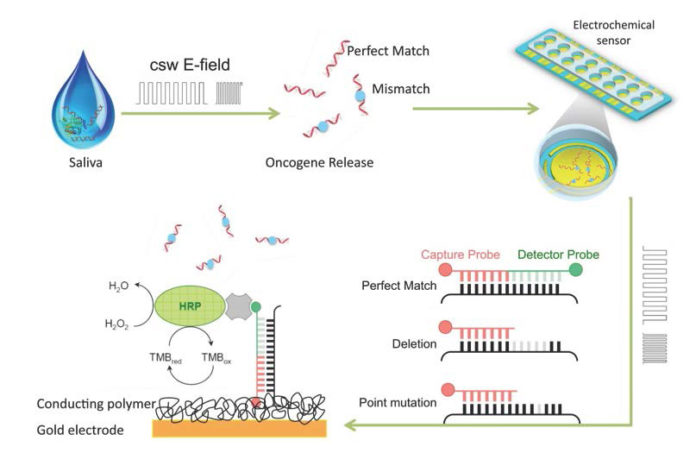 Finger-prick blood testing has been facing a lot of criticism as of late due to variations in measurements and possible unethical business practices. However, thanks to technology developed by scientists from the University of California, Los Angeles, we may someday be able to rely on another bodily fluid, saliva, to help us learn more about our health.
Finger-prick blood testing has been facing a lot of criticism as of late due to variations in measurements and possible unethical business practices. However, thanks to technology developed by scientists from the University of California, Los Angeles, we may someday be able to rely on another bodily fluid, saliva, to help us learn more about our health.
Back in 2008, the UCLA team developed a new diagnostic method called “electric field-induced release and measurement”, or EFIRM. EFIRM works by using an electrical field to disrupt exosomes to release their contents and then measure the RNA and proteins that were released. Since then, the team has managed to show that EFIRM can detect cancer mutations with near 100% sensitivity and specificity in saliva. While numerous other techniques for detecting cancer mutations exist, according to Professor David Wong, associate dean for research at the UCLA School of Dentistry, EFIRM outperforms them all by 30%.
Salivary diagnostics could potentially have far-reaching applications in the area of mobile health. As saliva is simple and non-invasive to collect, tests could be performed anywhere. Once sensor technology is miniaturized and becomes more affordable, salivary diagnostic devices could be one day found in homes and lead to more personalized medicine.
And testing doesn’t have to stop at cancer diagnosis. Vivek Shetty, also a professor at UCLA School of Dentistry, is investigating using salivary diagnostics for measuring stress-related conditions such as PTSD and depression.
Take a look at the video below of Dr. Michael Tu from Professor Wong’s lab demonstrating how EFIRM works:
More from The Daily Bruin: UCLA scientists develop method to predict diseases by testing saliva…
Medgadget Flashback: Salivary Sensor May Lead to New Bloodless Diagnostic Tests…
The post Salivary Diagnostics Detect Biomarkers for Cancer and More Using Electric Fields appeared first on Medgadget.
